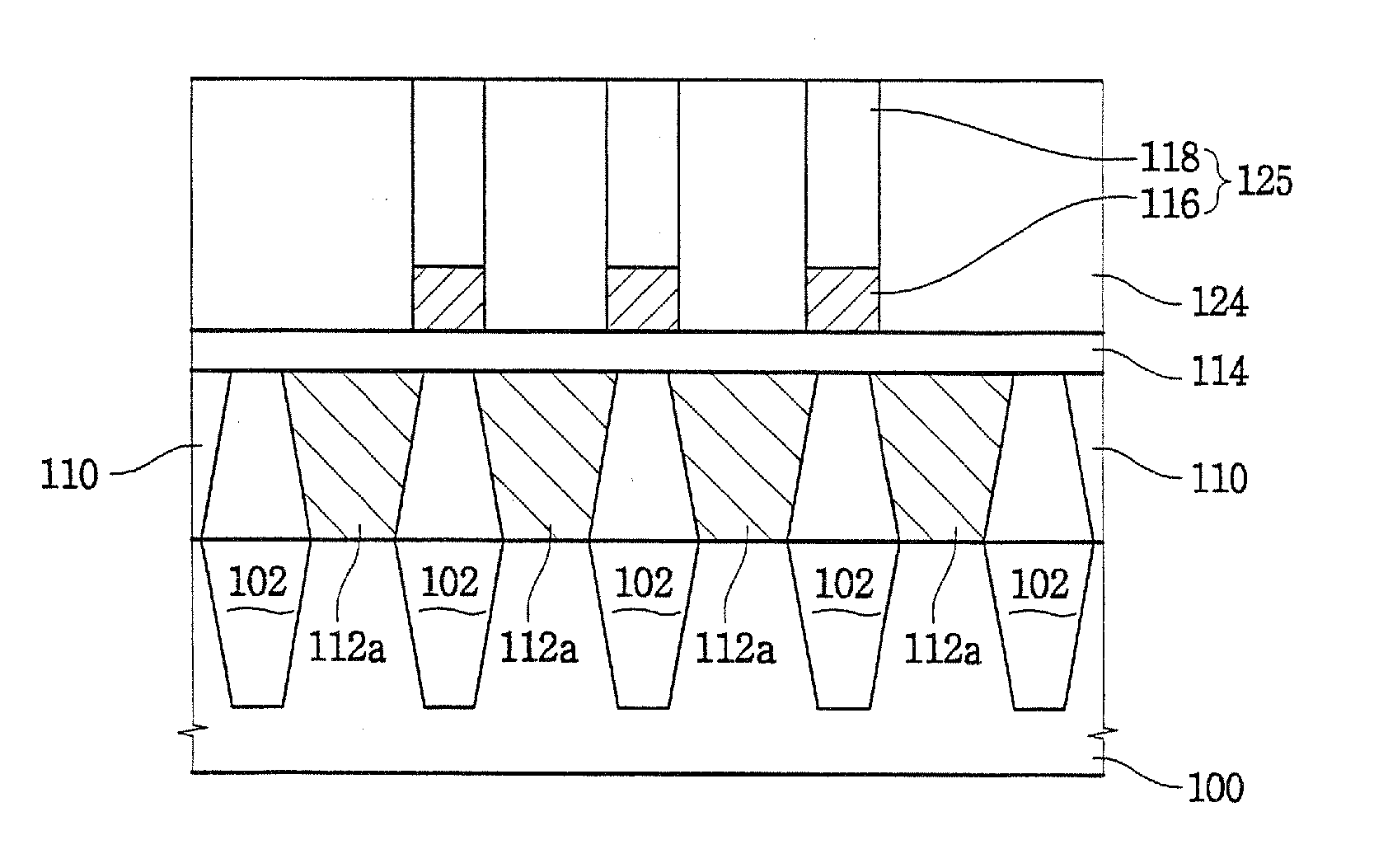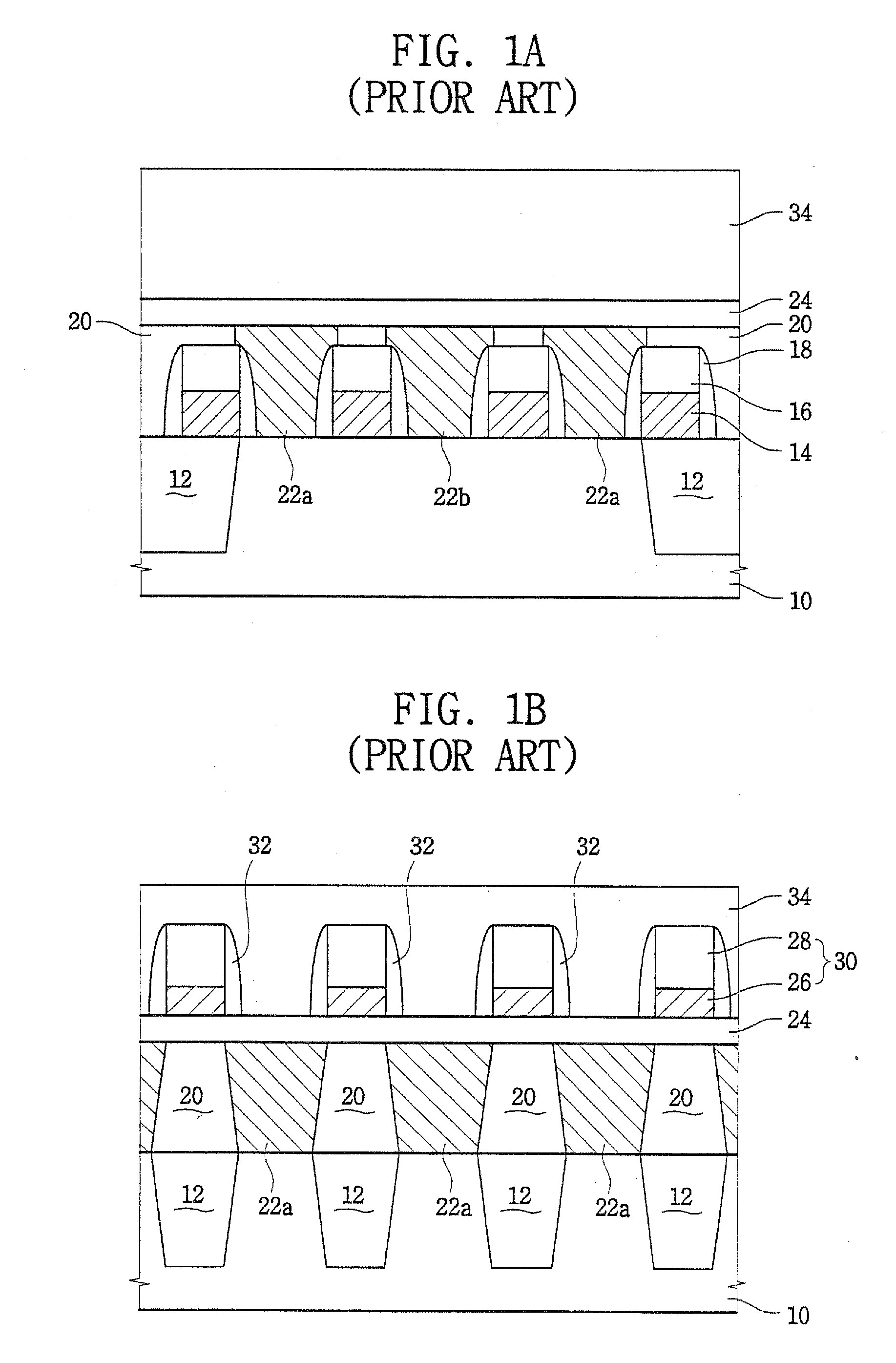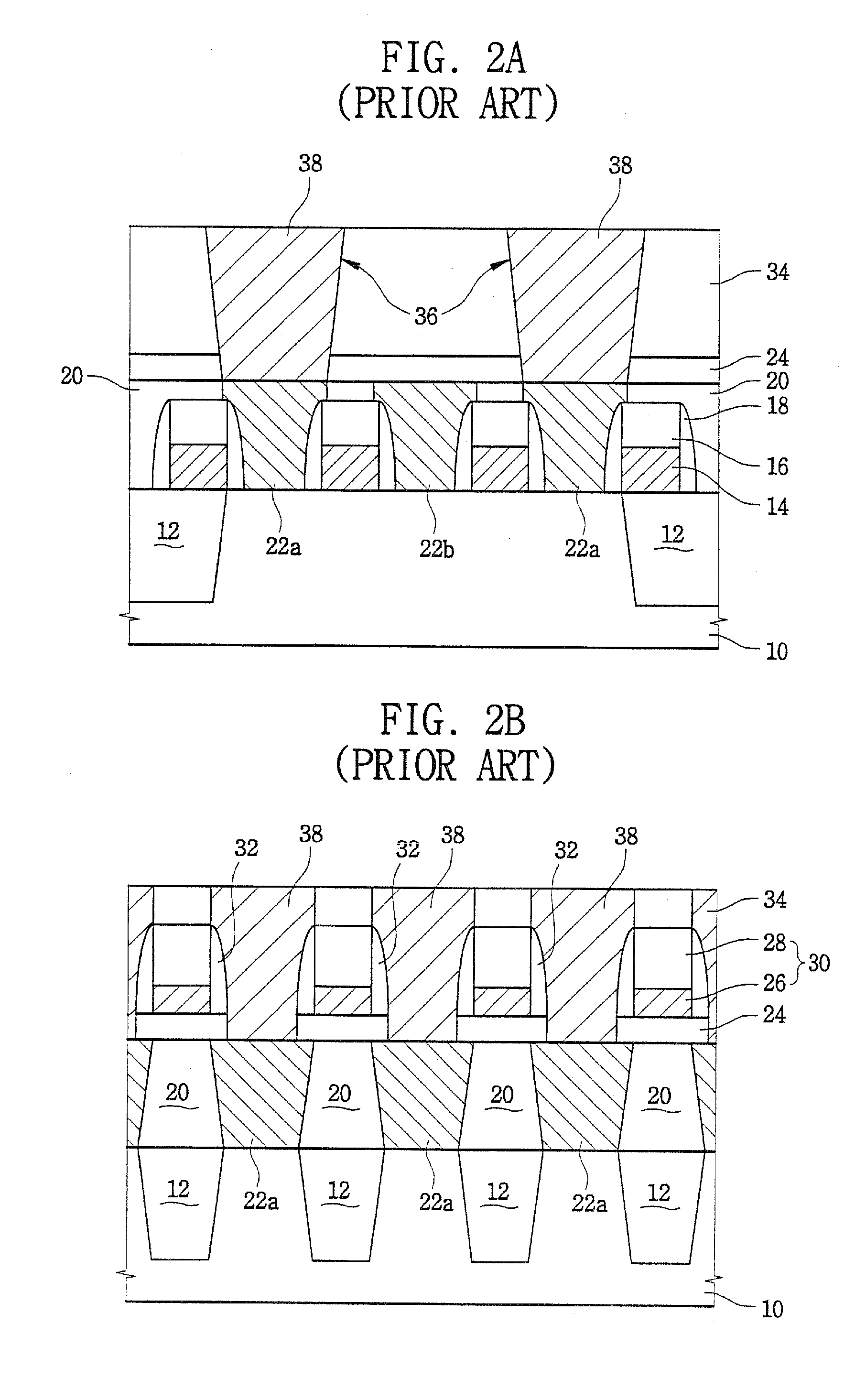Semiconductor device
a technology of magnetic field and device, applied in the direction of magnetic field device, transistor, electrical apparatus, etc., can solve the problems of reducing the cell per unit bit line, generating single bit failure, and difficult to form a small contact hole using conventional methods, so as to reduce the shoulder margin of a bit line and reduce the bit line loading capacitance
- Summary
- Abstract
- Description
- Claims
- Application Information
AI Technical Summary
Benefits of technology
Problems solved by technology
Method used
Image
Examples
Embodiment Construction
[0034] It should be understood that exemplary embodiments of the invention described below may be varied modified in many different ways without departing from the inventive principles disclosed herein, and the scope of the invention is therefore not limited to these particular following embodiments. Rather, these embodiments are provided so that this disclosure will be thorough and complete, and will fully convey the concept of the invention to those skilled in the art by way of example and not of limitation.
[0035] Hereinafter embodiments of the invention will be explained with reference to the accompanying drawings. In the drawings, like reference numerals identify similar or identical elements.
[0036]FIGS. 3A-3C, 4A-4D, 5A-5D, 6A-6D, 7A-7D, 8A-8D, and 9A-9D are plan diagrams and cross-sectional diagrams illustrating a method of manufacturing a DRAM device according to an embodiment of the invention. bit lines 125 are formed, while FIGS. 3B and 3C are cross-sectional diagrams tak...
PUM
 Login to View More
Login to View More Abstract
Description
Claims
Application Information
 Login to View More
Login to View More - R&D
- Intellectual Property
- Life Sciences
- Materials
- Tech Scout
- Unparalleled Data Quality
- Higher Quality Content
- 60% Fewer Hallucinations
Browse by: Latest US Patents, China's latest patents, Technical Efficacy Thesaurus, Application Domain, Technology Topic, Popular Technical Reports.
© 2025 PatSnap. All rights reserved.Legal|Privacy policy|Modern Slavery Act Transparency Statement|Sitemap|About US| Contact US: help@patsnap.com



